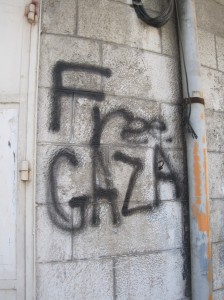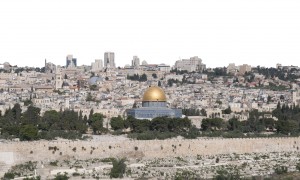West Bank-born Palestinian student Aya Khatib is one of the lucky ones.
Khatib, a broadcast journalism major, was born in the West Bank but moved to East Jerusalem after the Second Intifada, which began in 2000. Because she is now considered a “permanent resident” of Jerusalem, she is able to travel freely outside the Palestinian territories for school, but others, like those in the occupied West Bank and Gaza Strip, are not so lucky.
Residents of the Gaza Strip were recently blockaded inside for a week after an attack on Egyptian military headquarters near the border, according to Reuters. Since the blockade, the 1.7 million people who live inside the Gaza strip have been without resources, humanitarian aid or the option for students to get to school outside the border.
This blockade is not a novel occurrence. For years, both the Israeli and Egyptian governments have intermittently blocked the residents of the Gaza Strip from exiting the territory, explained BYU associate professor of geography Chad Emmett, who has extensively studied the Palestinian-Israeli conflict.

When Khatib’s family lived behind the Israeli checkpoints in the West Bank, Khatib explained, she had to get up at 4:30 every morning to get through security at the border of Jerusalem in order to make it to school by 8 a.m. If the border happened to be closed before she returned from school she would be forced to stay the night in Jerusalem.
After the Second Intifada, Khatib’s family moved to Palestinian-held East Jerusalem. Because they do not live inside the West Bank or Gaza, she was allowed to have an Israeli identity card, nicknamed a “blue card,” stating she is a legal permanent resident.
“I have a blue ID that allows me to travel through Israel and Palestine, but those who live in the West Bank cannot even get into Jerusalem. … It’s like they live in a prison,” Khatib said.
Though she had to go through an extensive process to get permission from the Israeli government to even get a student visa appointment with the United States embassy, students from the Gaza Strip often have an even more difficult time.
Many students in the Gaza Strip are stopped from even finishing their education because they attend a school in West Bank or abroad, explained Emmett, relating a situation he had witnessed during his time as a professor at the BYU Jerusalem Center for Near Eastern Studies.
“There was an issue where they were trying to get six Christian Arabs to the West Bank from Gaza who were attending Bethlehem University, including one that needed to graduate,” Emmett said. “She had lived in Bethlehem for four years coming and going through Israel … and Israel said no.”

Courtesy iStock Photo
According to a press release from Amnesty International, students who are unable to leave Gaza are forced to pursue limited educational opportunities inside the territory or try to find the resources to apply to travel to another country.
Because of Khatib’s permanent resident status, she is able to travel to the U.S. for school and travel back to Jerusalem every summer and Christmas to visit her family, she explained. Her experience growing up in Palestine is what inspired her to study communications.
“I decided that maybe if I became a journalist, I could tell the truth,” she said. “People know nothing about Palestine or what we go through.”
After she graduates, Khatib hopes to work for Al Jazeera English for a few years before returning to the Middle East, where she hopes to cover politics.




